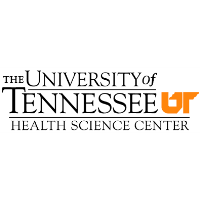UT System Collaboration Elucidates How Natural Chemicals in Green Tea Work
April 02, 2018

University of Tennessee System Collaboration Elucidates How Natural Chemicals in Green Tea Work
Memphis, Tenn. (April 2, 2018) – Green tea has always been known to have beneficial health effects, but how these effects come about has been a mystery. Now, a team collaborating across the University of Tennessee system has discovered molecular mechanisms with which key chemicals in green tea work.
The research teams of L. Darryl Quarles, MD, of the University of Tennessee Health Science Center (UTHSC), Jeremy C. Smith, PhD, of the University of Tennessee, Knoxville (UTK) and Oak Ridge National Laboratory (ORNL), and Jerome Baudry, PhD (who was at UTK but has since moved to the University of Alabama in Huntsville) have discovered which receptor key chemicals found in green tea interact with, according to work published in the article , “GPCR6A is a Molecular Target for the Natural Products Gallate and EGCG in Green Tea.” in the journal Molecular Nutrition and Food Research, a peer-reviewed scientific journal that covers the latest research in nutrition and food science.
Quarles, the primary investigator of this research, states that the work is important for a number of reasons. “First, it provides a molecular mechanism to explain the medicinal effects of green tea on energy metabolism, and why consumption of green tea may impact a wide range of clinical disorders,” Quarles said. The clinical disorders that green tea consumption has been reported to impact include metabolic syndrome, type 2 diabetes, and prostate cancer. “Second, the publication of this research is another example of the unique computational biology expertise at UTK/ORNL.”
For Smith at UTK/ORNL, the discovery of the molecular mechanism by which green tea becomes beneficial to the human body signals a continuation of a fruitful collaboration between the UTK/ORNL and UTHSC laboratories.
“With the help of the computational power at ORNL and experiments performed in Dr. Quarles’ lab, we have identified that gallates, which are key natural chemicals in green tea, bind to a specific receptor named GPRC6a,” said Smith. “Imagine the chemicals as the keys, and the receptors as the locks. What the computing allowed us to do is find the key that fits into the lock. By computing different chemical shapes into these receptors, we were able to make a great step forward in the direction of understanding the molecular mechanism of green tea action.”
Interestingly, the green tea story has a twist in its tail; two of the more prominent gallates in green tea—epigallocatechin 3-gallate (EGCG) and gallic acid—have opposite effects when they bind to the receptor. Whereas EGCG inhibits the progression of prostate cancer, gallic acid may advance the disease. The team have also now found an explanation for this in how the chemicals bind differently to the receptor.
“It’s important that we seem to have identified how these essential players in green tea’s nutritional function might be working in the human body.” Smith said.
As Tennessee’s only public, statewide, academic health system, the mission of the University of Tennessee Health Science Center (UTHSC) is to bring the benefits of the health sciences to the achievement and maintenance of human health, with a focus on the citizens of Tennessee and the region, by pursuing an integrated program of education, research, clinical care, and public service. Offering a broad range of postgraduate and selected baccalaureate training opportunities, the main UTHSC campus is located in Memphis and includes six colleges: Dentistry, Graduate Health Sciences, Health Professions, Medicine, Nursing and Pharmacy. UTHSC also educates and trains cohorts of medicine, pharmacy and/or health professions students -- in addition to medical residents and fellows -- at its major sites in Knoxville, Chattanooga and Nashville. Founded in 1911, during its more than 100 years, UT Health Science Center has educated and trained more than 57,000 health care professionals in academic settings and health care facilities across the state. For more information, visit www.uthsc.edu. Follow us on Facebook: facebook.com/uthsc, on Twitter: twitter.com/uthsc and on Instagram: instagram.com/uthsc.
Contact:
Amber Carter
acarte39@uthsc.edu
